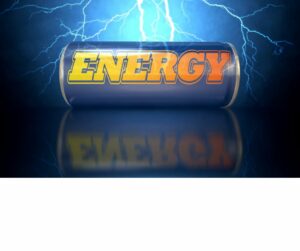Health Risks of Heavy Energy Drink Consumption
go.ncsu.edu/readext?957329
en Español / em Português
El inglés es el idioma de control de esta página. En la medida en que haya algún conflicto entre la traducción al inglés y la traducción, el inglés prevalece.
Al hacer clic en el enlace de traducción se activa un servicio de traducción gratuito para convertir la página al español. Al igual que con cualquier traducción por Internet, la conversión no es sensible al contexto y puede que no traduzca el texto en su significado original. NC State Extension no garantiza la exactitud del texto traducido. Por favor, tenga en cuenta que algunas aplicaciones y/o servicios pueden no funcionar como se espera cuando se traducen.
Português
Inglês é o idioma de controle desta página. Na medida que haja algum conflito entre o texto original em Inglês e a tradução, o Inglês prevalece.
Ao clicar no link de tradução, um serviço gratuito de tradução será ativado para converter a página para o Português. Como em qualquer tradução pela internet, a conversão não é sensivel ao contexto e pode não ocorrer a tradução para o significado orginal. O serviço de Extensão da Carolina do Norte (NC State Extension) não garante a exatidão do texto traduzido. Por favor, observe que algumas funções ou serviços podem não funcionar como esperado após a tradução.
English
English is the controlling language of this page. To the extent there is any conflict between the English text and the translation, English controls.
Clicking on the translation link activates a free translation service to convert the page to Spanish. As with any Internet translation, the conversion is not context-sensitive and may not translate the text to its original meaning. NC State Extension does not guarantee the accuracy of the translated text. Please note that some applications and/or services may not function as expected when translated.
Collapse ▲Ask Transylvania Cooperative Extension
Q: Are energy drinks really that bad for me? I have been drinking 2 per day to stay focused.
A: Energy drinks have become increasingly popular for younger adults with about one-third of teenagers between 12-17 years drinking them on a regular basis1. Part of what makes them so appealing is their powerful marketing. One of the more widely known brands of energy drinks’ website shows skateboarders, competitive dirt bikers and pretty girls all holding cans of the “meanest energy drink on the planet.” But the best part of an energy drink, is of course the allure of the energy boost.
As one of my favorite professors, Brenda Marques once said, “Energy comes from food.” What she was saying was that energy only comes from food. When we drink caffeine our adenosine receptors in our brain are blocked2. These receptors are responsible for promoting sleep drive among other tasks3. When adenosine is blocked, individuals feel more aroused and heart rate and blood pressure increase. Caffeine is a psychostimulant that does not provide actual energy, but rather gives us the illusion of having more energy. Real energy production is a metabolic process at cellular level which happens when food is broken down. So, is drinking an energy drink safe, especially considering our teens are the marketed target population? Let’s explore the components of energy drinks.
- Energy drinks usually contain caffeine.
- Energy drinks contain a sweetener of some non-nutritive sort such as stevia, aspartame or sucralose, or contain sugar in the form of juices, cane sugar, agave nectar and others.
- Energy drinks will sometimes contain supplements such as ginseng which advertise other nutritious benefits beyond just the energy boost.
Caffeine
Energy drinks contain caffeine, but unlike coffee or tea, energy drinks can vary in the amount of caffeine offered. The estimated range is 100-300mg of caffeine per serving in an energy drink vs. 80-100mg in a cup of coffee. We know up to 400 mg of caffeine is considered safe for adults, but it is hard to extrapolate to children4. So, depending on the energy drink, more than 1 per day may exceed the safe recommended caffeine level. High caffeine intake in children has shown disruptions in sleep patterns and increased risk-taking behaviors1. Other health concerns with high caffeine intake are anxiety, digestive problems, heart rhythm disturbances, and blood pressure issues1.
Sweeteners
According to the American Heart Association, added sugar, not naturally occurring sugars, should be limited to 9 teaspoons (36g) per day for men and 6 (25g) teaspoons per day for women. This is because consumption of added sugar is correlated with negative health outcomes. Added sugar, as opposed to foods with naturally occurring sugar, comes with all the energy but none of the nutrient benefits. Some name-brand energy drinks have between 27 and 54 grams of added sugar which is more than a whole days’ worth.
Extra Stuff
Some energy drinks have vitamins, minerals and even some herbal supplements. Herbal supplements are not all bad, but use caution. Herbal supplements are not regulated by the FDA which means they are not required to undergo thorough testing for purity or even safety. Supplements may also interact with medications so ask a medical professional if you take prescription medications.
So, are they actually that bad for you? It depends. Which energy drink are you drinking and how many per day? How much sugar and caffeine are you ingesting? And what are the additives? These are questions to ask yourself the next time you choose a beverage for an energy boost.
- National Center for Complementary and Integrative Health. Energy Drinks. Last Updated July 2018.
- J Neurosci. 2011 Jul 6; 31(27): 10067–10075.doi: 10.1523/JNEUROSCI.6730-10.2011
- Summer J, Vyas N. Adenosine and Sleep. Sleep Foundation.
- Weiss C. May Clinic Q and A: Are energy drinks a healthy option? May Clinic. February 14th, 2023.





